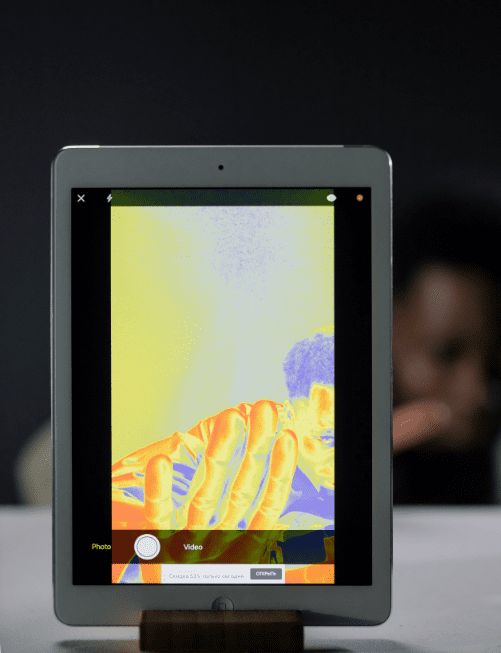Table of Contents:
The world visible to the human eye is only one side of reality.
There is a whole spectrum of information that hides from our sight, especially when it comes to temperature differences of different surfaces.
A USB thermal imaging camera, which allows you to visualize the infrared radiation emitted by various objects, will let you see them.
Such a device is becoming an important tool in many fields, from industry to scientific research and medical applications.
Check out what you should know about the USB thermal imaging camera!
What is a USB thermal imaging camera?
The USB thermal imaging camera, also known as a thermographic or infrared camera, is an innovative device that uses advanced infrared detection technology to generate images based on temperature differences.
In short, it makes it possible to see light invisible to the human eye, showing areas of varying temperature.
The key component of such a device is a thermal detector that converts infrared light into real-time images.
Unlike traditional cameras, which capture visible light in the 400-700 nanometer range, thermal cameras operate in the wavelength region up to ca.
14,000 nanometers .
Dzięki temu są w stanie tworzyć obraz oparty na rozkładzie temperatury obiektów, co pozwala na analizę termiczną nawet w całkowitej ciemności.
Connected via a suitable port to a computer, the USB thermal imaging camera is extremely practical and portable.
With this easy integration with other equipment, users can analyze data in real time, make quick decisions and respond to changes in temperature.
Where are USB thermal imaging cameras used?
The ability to capture images based on infrared radiation makes the USB thermal camera applicable in many areas of our lives.
Below are some examples of how this type of device can be used.
1. building diagnostics and thermal modernization
USB thermal imaging cameras are an invaluable tool in the field of building diagnostics.
They allow quick identification of areas of heat loss, leaks or problems with thermal insulation.
Thanks to this, specialists in the field of
thermo-modernization can effectively plan repair or modernization work, minimizing energy losses and improving the energy efficiency of buildings.
2. electrical inspections and maintenance
In the field of maintenance and safety of electrical installations, a USB thermal imaging camera can sometimes be invaluable.
With its ability to quickly, accurately detect excessive heating of electrical components, it enables effective maintenance planning and elimination of potential failure hazards.
3. medicine and veterinary medicine
In monitoring patients or animals, thermal imaging cameras help detect inflammation, health problems and body temperature asymmetries.
In medicine, they are also used in scientific research related to thermoregulation of organisms.
4 Security and monitoring
A good quality thermal imaging camera can be used in monitoring and security systems.
Its ability to capture images in conditions of limited visibility makes it an effective tool for monitoring specific areas at night, for example.
5. DIY electronic projects
USB thermal cameras also provide an inspiring solution for electronic project enthusiasts.
Thanks to their compact size and easy integration with minicomputers such as Arduino or Raspberry Pi, they open up new possibilities in the field of automation, monitoring or environmental control.
They are the perfect tool for hobbyists who want to experiment with thermal imaging and use its potential within their own systems.
What should a USB thermal imaging camera be distinguished by?
A good USB thermal imaging camera should be characterized by a number of features that ensure high image quality, reliable performance and wide application in various conditions.
One of the key elements is thermal resolution, which affects the camera’s ability to accurately distinguish temperatures.
The higher the resolution, the more detailed the thermal image is generated, which in turn allows a more accurate analysis of the surveyed area.
Thermal sensitivity of the camera, referred to as NETD, is also an important aspect.
The lower the value, the better the camera is at capturing small changes in temperature, which is important for diagnostic testing, for example.
A good thermal imaging camera should also feature an adequate temperature range to cope with a variety of applications, from measurements in freezing weather to monitoring industrial processes that generate large amounts of heat.
USB thermal imaging camera - summary
The benefits of using USB thermal imaging cameras include speed, precision, mobility and the ability to operate in difficult conditions.
These state-of-the-art tools are an important piece of equipment for professionals in various industries.
If you’re looking for proven thermography equipment, Botland offers both versions designed to be connected to a microcontroller, as well as models ready for standalone operation.
How useful was this post?
Click on a star to rate it!
Average rating 0 / 5. Vote count: 0
No votes so far! Be the first to rate this post.





















